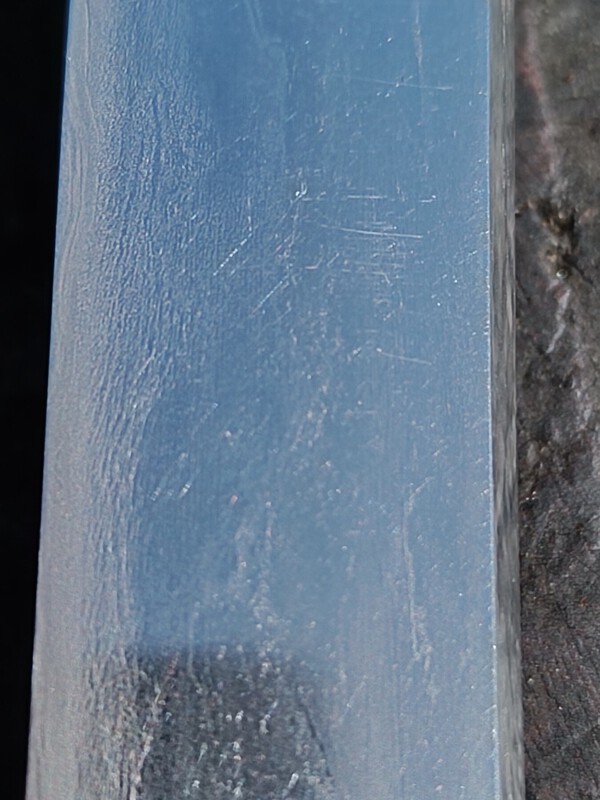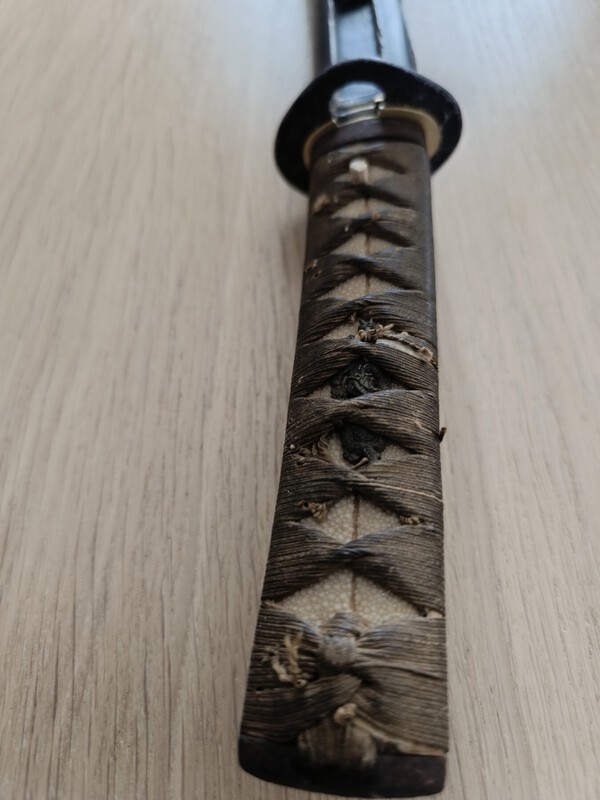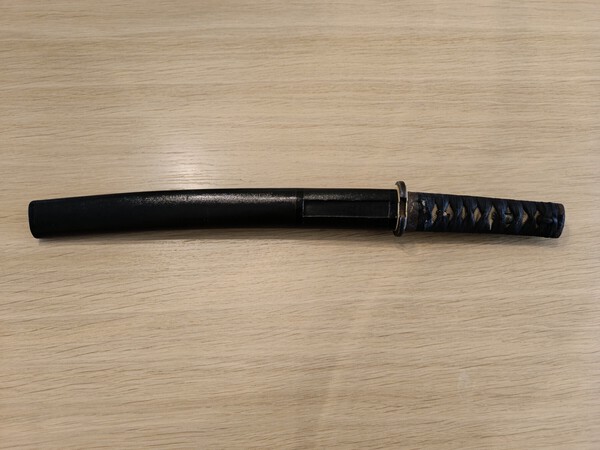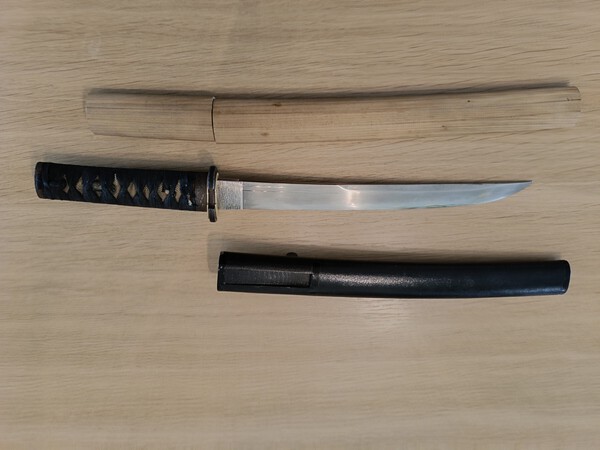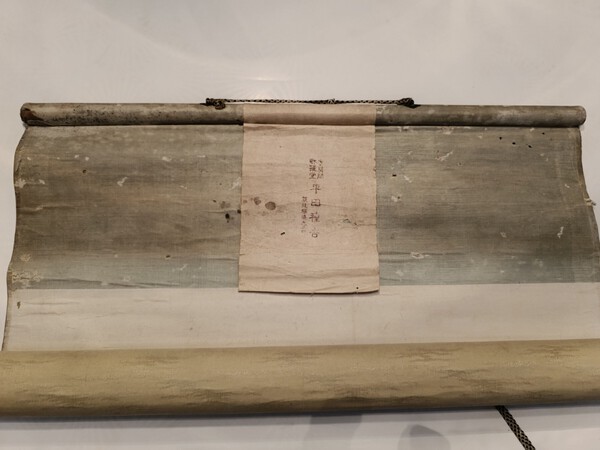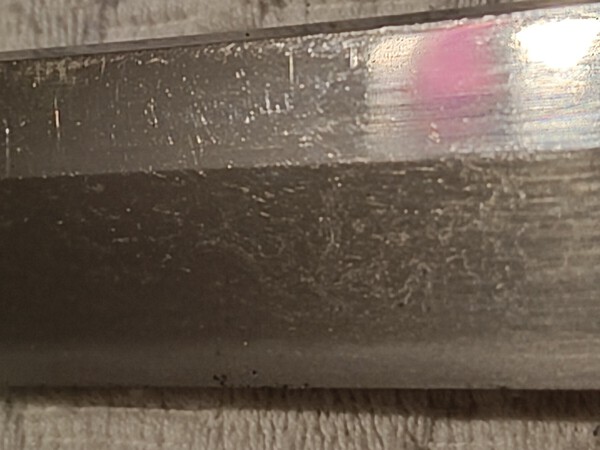
rodrig4
Members-
Posts
135 -
Joined
-
Last visited
About rodrig4
- Birthday 09/22/1954
Contact Methods
-
AIM
improve my knowledge
Profile Information
-
Gender
Male
-
Location:
france.vendée
-
Interests
arts martiaux.
peche.
art japonais.
Profile Fields
-
Name
rodriguez
Recent Profile Visitors
1,398 profile views
rodrig4's Achievements
-
wakisashi signed of 1477 Bishu Osafune Norimitsu .
rodrig4 replied to rodrig4's topic in Swords and Edged Weapons
price 1000 euros. -
wakisashi signed of 1477 Bishu Osafune Norimitsu .
rodrig4 replied to rodrig4's topic in Swords and Edged Weapons
-
wakisashi signed of 1477 Bishu Osafune Norimitsu .
rodrig4 replied to rodrig4's topic in Swords and Edged Weapons
-
Primary Material :Tamahagane Original/Reproduction :Antique Original Region of Origin :Japan Wakizashi avec Shirasaya et koshirae . Signed: 備 州 長 船 則 光 Bishu Osafune Norimitsu. 文 明 七 年 二 月 日 Bunmei Nananen Nigatsubi. Bunmei 7 per day in February . 文 明 七 年 二 月 日 Seven years must be added to the 1469 era, so 1477. The Bunmei era (文 明) is one of the eras of Japan (年 号, nengō?, lit. "name of the year") after the Ōnin era and before the Chōkyō era. This era covers the period from April 1469 to July 1487[1]. The reigning emperor is Go-Tsuchimikado-tennō (後 土 御 門 天 皇). Nagasa 43.8 cm. Sori 1.1 cm. Motohaba 2.7 cm. Motogasane 0.7 cm. Sakihaba 1.8 cm. Sakigasane 0.5 cm Kissaki: Chu-Kissaki (Medium) Bôshi: maru. Mune: Iori-lue (庵 棟): presence of a central ridge. Forms a more or less acute angle. Style much appreciated after the Koto period[1 sori, 反 り: Torii-zori (華 表 反): the curvature is located at the center of the blade. It is the most used type of sores. Also called kyo, being a reference to the Yamashiro tradition, which mainly used this type of curvature. tsurikomi, 造 込 み: Shinogi-zukuri (鎬 造): appeared after 987, this shape has a curved edge close to the mune, a yokote. It is the most represented form on tachi and katana. It is also called hon-zukuri. Jihada: mokume serré mixed with itame serré. The gorges (hi): kaku-dome. Hisaki-agaru, the greeting ends towards the kissaki. There are essentially two ways: To go beyond the yokote and more or less close to the ko-shinogi, a characteristic called hisaki-agaru (樋 先 上 る) . Groove : bôhi ni soebi (棒 樋 に 添 樋), slightly under the shinogi . Nakagojiri: Ha agari kurijiri. yasurime, 鑢 目: katte sagari. hamon: suguha. nie and nioi: nie deki and nioi deki are present on the hiraji.
-
hello. this signature is: soshu ju sukehiro or sukekane? I lean towards sukekane . Thank you in advance. cordially. RG.
-
hello. Could you confirm that this is the BUNMEI period. Thank you in advance and have a good day. RG
-
-
Description Characteristics of the object Primary Material Tamahagane Original/Reproduction Antique Original Japan Region Signed: 長 広 Nagahiro. Nagasa 29.5 cm. Sori 0.5 cm. Motohaba 2.6 cm. Motogasane 0.3 cm. Sakihaba 0.0 cm. Sakigasane 0.0 cm. Jigane: masame-hada: A masame-hadahada is generally associated with the Yamato tradition and indeed the blades of the first Yamato schools and those made by their branches and later blacksmiths who worked in the Yamato style show indeed in most cases a kind of masame . Hamon: Mix of sunagashi and tobiyaki. Boshi: Ko-maru Ko-maru Boshi: The term ko-maru (小 丸) refers to a boshi with a small rounded kaeri. In the standard ko-maru style, the top curves around the mun , then folds towards it , forming an arc that starts from the yokote (line separating the tip from the rest of the blade) and is parallel to the edge of the kissaki . Nakagojiri: The nakagojiri is ha agari kurijiri. Yasurime: Yasurime is kiri. Mun: The level is iori-ble. Hi (grooves): A popular combination of koshi-bi is gomabashi (護 摩 箸), stylized ritual wands that are essentially a shorter variant of futasuji-ji. Gomabashi are like koshi-bi rare for tachi and katana and especially seen on hira-zukuri tantô or ko-wakizash. ps : the price is 660 euros and I accepete the payal payments.
-
Caractéristiques de l'objet Matière première Tamahagane Original/reproduction Original antique Région d'origine Japon Non signé. Nagasa 28,3 cm. Sori 0,4 cm. Motohaba 2,8 cm. Motogasane 0,6 cm. Sakihaba 0,0 cm. Sakigasane 0,0 cm. Le Hamon : semble être un gunome avec kinsuji (金筋) , tobiyaki (飛焼き) . Le hada : muji-hada (無 地 肌) : Le terme muji-hada est utilisé lorsqu'un jihada n'est pas perceptible parce qu'il est si étroitement forgé. Une combinaison populaire de koshi-bi est le gomabashi (護 摩 箸), des baguettes rituelles stylisées qui sont essentiellement une variante plus courte du futasuji-ji. SUGATA : unokubi-zukuri (鵜首造) : Semblable au kanmuri-otoshi-zukuri mais avec seulement le shinogi-ji du milieu ncliné, c'est-à-dire que la zone de base est en shinogi-zukuri normal et que la zone kissaki s'étend à nouveau. Un unokubi-zukuri est parfois interprété avec un yokote et est généralement vu sur le tantô et le wakizashi. Boshi : Maru-O (Daimaru) - Grand Kaeri arrondi. Nakago : Iriyamagata-jiri (forme en V asymétrique) L'iriyamagata-jiri a une extrémité en forme de V, mais le côté pointu est plus long que le côté arrière (mune). Il est similaire au ha-agari kurijiri, mais ses deux bords sont linéaires et non bulbeux. Le côté tranchant du nakago présente un angle aigu en bas, tandis que l'autre côté présente un léger angle vers le haut par rapport au côté arrière (mun). Mune : Le mune est iori-mune. Ce tanto présente un shirasaya. Prix : 590 euros.
- 1 reply
-
- 1
-

-
hello. I have just acquired a tanto. I was told that the koshirae de tanto were never equipped with kozuka??? cordially. RG.
-
hello. here is a kakemono that has a signature on the back and I can’t make the connection with the kakemono. Help would be welcome. Thank you in advance and have a good day. RG.
-
hello. here is a kakemono that has a signature on the back and I can’t make the link with the kakemono. Some help would be welcome. Thank you in advance and have a good day. RG.
-
bonjour. je n'arrive pas à traduire tous les kanji de cette tsuba, cependant il me semble qu'à droite de la tsuba le dernier kanji semble être yuki. pourriez-vous me donner un coup de main pour cette traduction. merci d'avance et bonne journée. RG.
-
Wakizashi Signed:備州長船住康光 Bishu Osafune ju Yasumitsu.
rodrig4 replied to rodrig4's topic in Swords and Edged Weapons

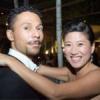

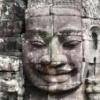
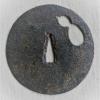
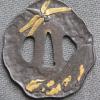
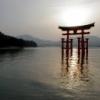
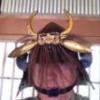
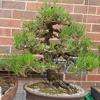




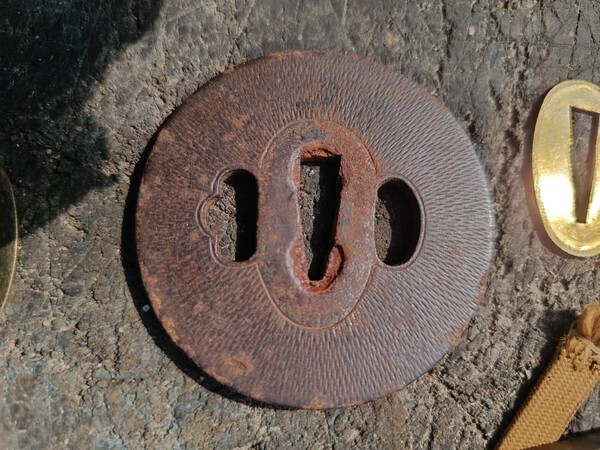

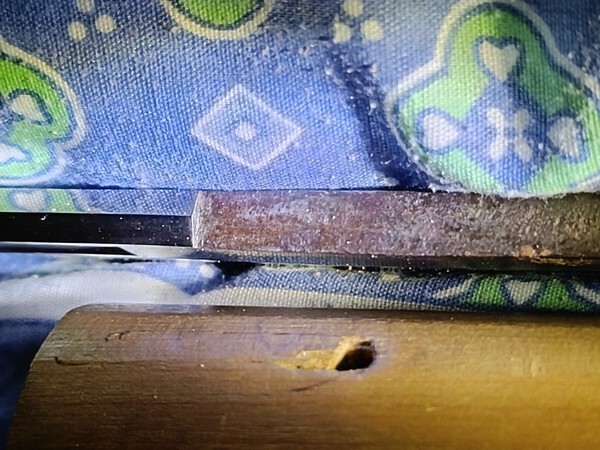









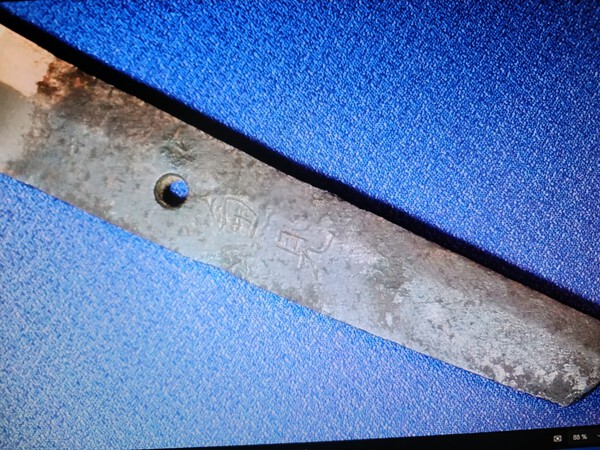



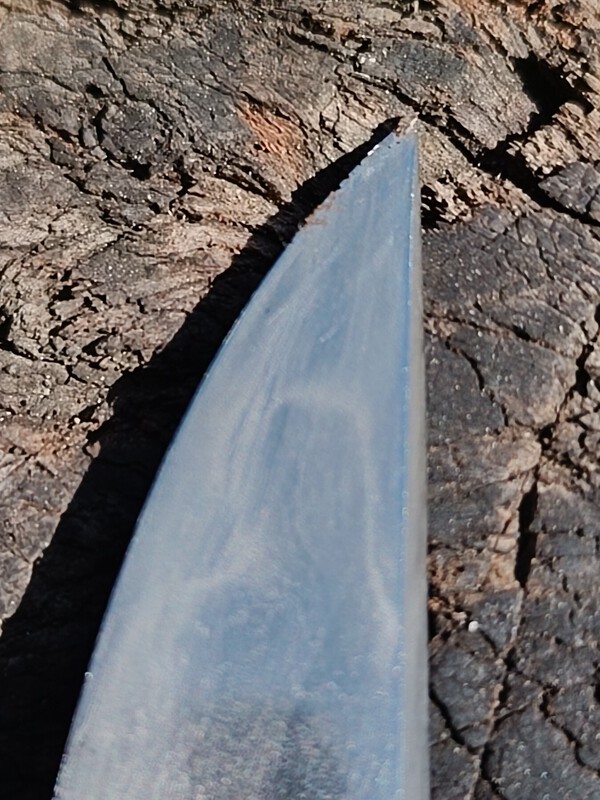
.thumb.jpg.657af07327ca0c1e11320f2cc00885a2.jpg)
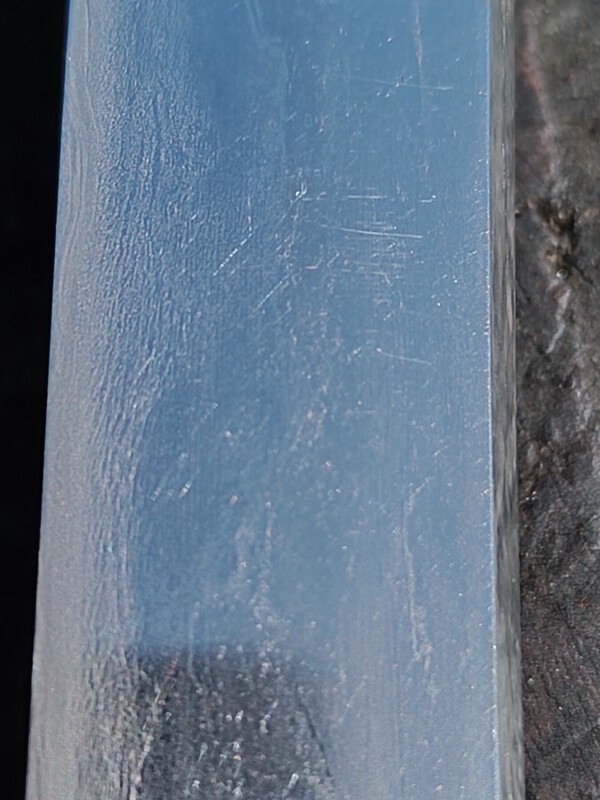
.thumb.jpg.5de71fd689a976f1f6e72cefa9fd509e.jpg)


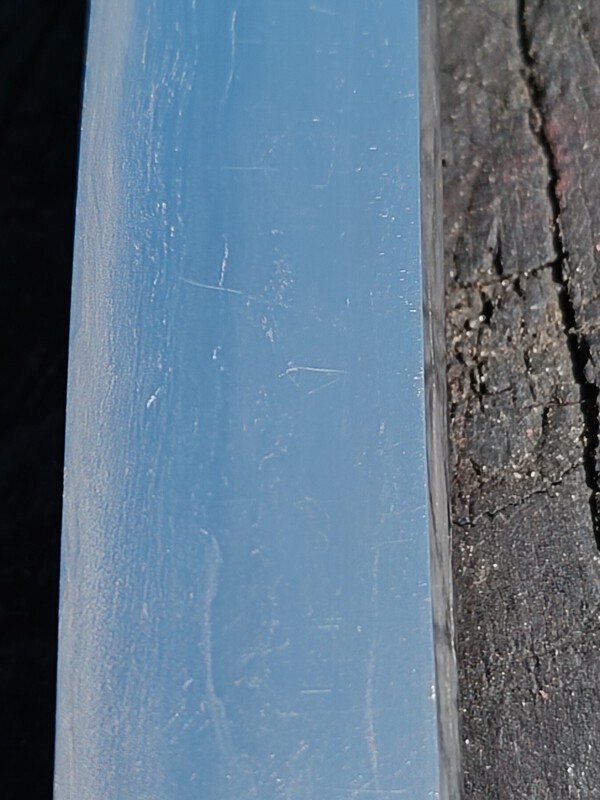
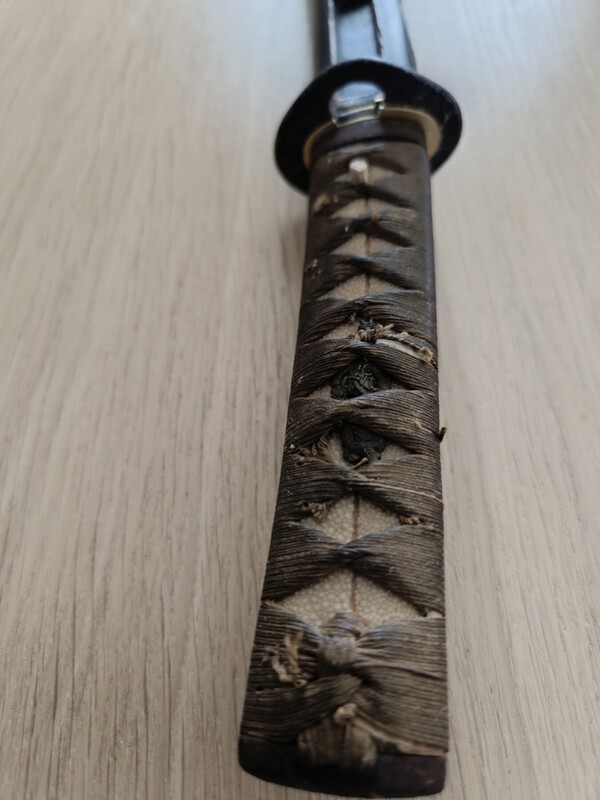


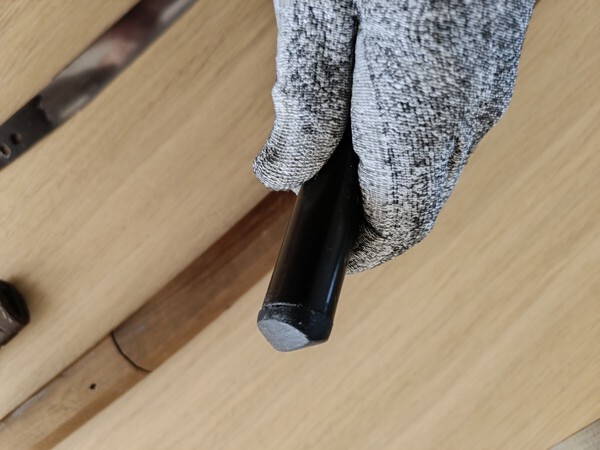
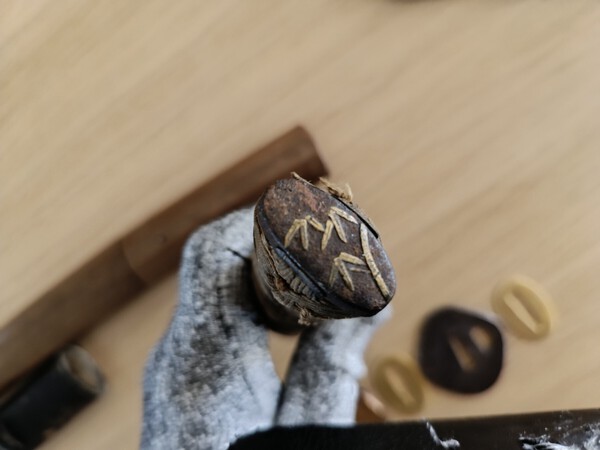


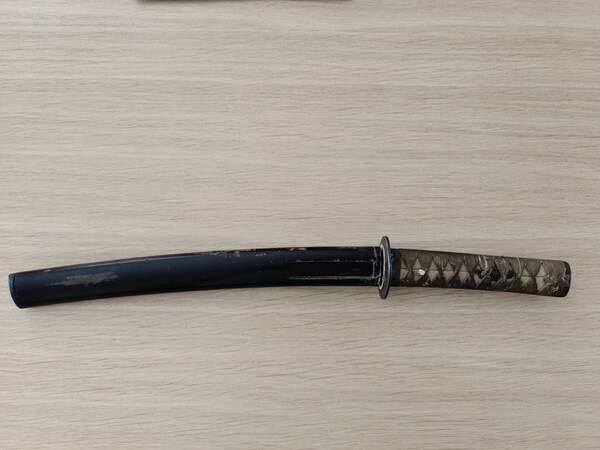
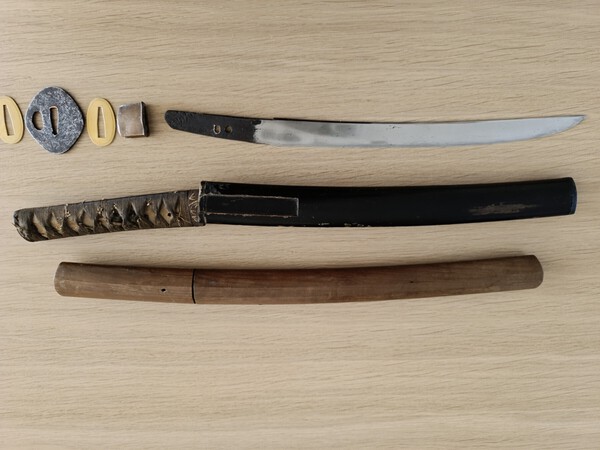
.thumb.jpg.e3bd36e20a7b0f3a7c0fd9addd02286b.jpg)

